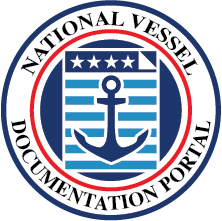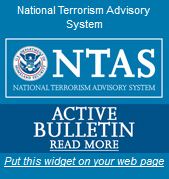Vessel Documentation Explained
The national form of registration in the United States, it’s actually one of the oldest functions of the American government. The 11th Act of the First Congress, documentation provides for commerce that is unhindered between the states. Furthermore, for international purposes, it provides conclusive evidence of nationality. For certain restricted trades, such as coastwide and fisheries trade, it admits vessels. Vessel financing has been enhanced through the availability of preferred mortgages on documented vessels for more than a century.
Can I Document My Vessel?
If your vessel is owned entirely by a citizen of the United States and measures at least five net tons, absolutely. However, there are some exceptions – such as certain oil spill response vessels.
I Can Document My Vessel, Do I Have To?
You do if it measures five net tons or more and you’re using it on coastwise trade (transporting merchandise or passengers) in the navigable waters of the United States or the EEZ (Exclusive Economic Zone). You also have to document it if you’re using it in fishing activities in those areas. Dredges that operate in the EEZ and US must be documented, as towboats in those areas must as well.
What Does “Measures Five Net Tons” Mean?
“Net Tons” measures volume, not weight. (It can be a little confusing.) Keep in mind: if your measure is longer than 25 feet in length, it will measure, at minimum, five net tons.
Are Some Vessels Exempt from Documentation?
Absolutely. Exempted vessels are those which do not operate on American navigable waters or in the fisheries of the Exclusive Economic Zone. Additionally, vessels are exempt that are Coastwise qualified, non-self-propelled vessels used in coastwise trade on lakes (which aren’t the Great Lakes) as well as within a harbor, on the rivers of the United States, or in the canals or internal waters of any state.
Is There More Than One Type of Documentation?
There is. Fishery, Registry, Recreation, and Coastwise are endorsements that can be made on a Certificate of Documentation. Bear in mind: you can use any documented vessel for recreation, no matter which endorsement you have. Of course, you can’t use a vessel with a recreation endorsement for anything else. For foreign trade, most use a “Registry” endorsement.
Are There Requirements for Documentation?
Yes. Basic requirements include eligibility for the endorsement sought, U.S. citizenship, and to be able to demonstrate vessel ownership.
Ways to Establish Vessel Ownership?
It depends on the vessel.
For example, if the vessel was never previously documented (or is new) then, submitting a Builder’s Certification that names the documentation applicant as the person for whom the vessel was first transferred or built can work. Also valid: foreign registration demonstrating the applicant is the vessel owner, a State Title or Registration copy, or a transfer on a Manufacturer’s Certificate of Origin.
Many vessels, however, were previously owned. Should that be the case, the applicant must present bills of sale or some other evidence that shows the vessel was transferred from the person who last registered, titled, or documented the vessel or to whom the vessel was transferred on a Manufacturer’s Certificate of Origin or Builder’s Certification.
Was your vessel transferred to you by some other means? If so, then you should contact us at:
nvdcdocumentation.usFor the Purposes of Vessel Documentation, How Can I Establish United States Citizenship?
Verifying your social security will establish citizenship. Remember, for the purposes of documentation, individuals as well as partnerships, corporations, and other entities capable of holding legal title can be deemed citizens. In terms of corporations, the chairman of the board of directors and CEO must be citizens of the United States, the corporation must be registered in a state or the United States, and no more than a minority (less than 50%) of the number of directors necessary to constitute a quorum may be non-citizens. Furthermore, at least 75% of the stock must be vested in American citizens to get a fisheries or coastwise endorsement.
Is it Necessary to Establish Build Evidence? If So, How Do I Do It?
Yes, if the vessel is going to be used in the fisheries or coastwise trade you need to have evidence it was built in America. Build evidence can be established by submitting a Builder’s Certification. You can’t complete this form yourself. Rather, it has to be completed by the person who constructed or oversaw the construction of the vessel or, alternatively, an official of the company that built the vessel who also examined the records of the company so as to determine the build’s facts. A copy of this will not be accepted, so you must present with your submission either a Facts of Build Letter or the Original Builder’s Certification.
What Are the Hailing Port and Vessel Name Marking Requirements?
An application for documentation has to include a vessel name. This name has to be composed of letters of the Latin alphabet or Arabic or Roman numerals. Thirty-three characters is the maximum. Either actually or phonetically, it cannot be identical to any word or words used to solicit assistance at sea. Additionally, it cannot contain or be phonetically identical to profane, indecent, or obscene language, or to ethnic or racial epithets. After it has been established, application, fees, and the consent of the Director, National Vessel Documentation Center is required to change the vessel’s name. Hailing ports are often used for vessel identification, as many documented vessels have identical names.
How Should a Vessel Be Marked?
On a clearly visible interior structural part of a documented vessel’s hull, the abbreviation “NO” must precede a documented vessel’s official number. To mark this number, block-type Arabic numerals that are at least three inches high must be permanently affixed. This is so that any removal, replacement, or alteration would be clear, making for scarring or other forms of damage to the surrounding area.
On a clearly visible exterior part of a recreational vessel’s hull, the name and hailing port must be marked together. On the starboard and port bow of a commercial vessel, the name must also be marked. Also for a commercial vessel, the hailing port and vessel name must be marked on the stern. All markings can be made by any means and materials. However, they must result in durable markings that are clearly legible letters of the Latin alphabet or Arabic or Roman numerals, while also being at least four inches in height. While the state may be abbreviated, the hailing port markings have to include a place as well as a State, Territory, or possession of in the United States.
How Do I Change My Vessel’s Name or Hailing Port?
You can change the hailing port and/or name by completing the form on this page:
Change of Vessel Name/Haling Port
Do you want assistance with this? You can reach a documentation processor professional who can walk you through the process at: For more information or inquiries, email
info@nvdcdocumentation.usThe Coast Guard Requires the Designation of a Managing Owner, Why?
The Coast Guard requires the designation of a managing owner so that the right person gets mail concerning the vessel. As many vessels have more than one owner, one must be designated as the “managing owner.”
How Does a Preferred Mortgage Work?
A mortgage which is given status as a maritime lien is called a “preferred mortgage.” In the event of default, it enjoys a certain priority. Additionally, the Coast Guard is prohibited from making certain changes in the documentation. These changes include, but are not limited to, changing the vessel name, ownership, and hailing port without the mortgagee’s consent. For this reason, many financial institutes require documentation eligible vessels to both be documented and to have preferred mortgages recorded against them.
How Can I Get Forms for Documentation?
Right here at this site. Completely secure, all of the forms can be completed there. After a form is completed, it will be forwarded automatically to a Documentation Processor for a comprehensive review. Most documentation people try to submit on their own contain deficiencies and tiny mistakes which can delay their documentation process by weeks or in some cases, even months. That can cause people to have to resubmit their fees. The online site provided here expedites the documentation process, cutting out deficiencies. Call for a documentation processor to walk you through the process. For more information, email
info@nvdcdocumentation.us.
Must an Application Be Submitted by Mail?
It does not have to be submitted by mail. In fact, you can submit any and all applications through this online portal. Convenient and advantageous, this online portal is not subject to the delays that come from submitting your applications in the mail. Every application made online through this portal is promptly reviewed for fast processing. For assistance with your application, you can contact a documentation processor at . For additional info or inquiries, email
info@nvdcdocumentation.us
Is There a Way to Obtain Title Information for a Documented Vessel?
Yes. You can get that from an “Abstract of Title.” This form shows all mortgages, bills of sale, and notices of claim of lien that are recorded and filed by the Coast Guard. You can request this form conveniently and securely right
here.
If you require assistance, you can contact a Documentation Processor at or email
info@nvdcdocumentation.usShould a Vessel Be Documented, Is it Exempt from State Jurisdiction?
Documented vessels still must comply with the laws of the state in which they are operated. Should state law enforcement personnel demand it, vessel documentation must be shown. Some states require documented vessels to display state decals showing they have complied with state requirements as well as requiring documented vessels to be registered, but not numbered.
Is the Vessel’s Tender Documented?
Documenting a vessel does not cover a vessel’s dinghy or tender. Those kinds of craft come under the motorboat numbering laws of the state of their principal use. For more, it is recommended that vessel owners contact the state agency that handles the numbering or registration of motorboats.
What Do I Have to Do to Sell My Documented Vessel?
Once the sale has been finalized, you can complete a Bill of Sale. Then, the new owner is required to complete a Transfer application. That can be filled out, securely and conveniently,
here.
Is there an outstanding mortgage on the vessel? If so, the vessel cannot be removed from documentation. The mortgagee/lender should complete a Satisfaction of Mortgage form. That can be found and filled out easily
here.
For How Long is a Certificate of Documentation Valid?
One year from the date of issue, provided there are no changes other than, potentially, the change of the owner’s address. A Certificate of Documentation must be renewed every year. Renewal applications can be submitted
here
Note: documentation can be renewed automatically for a period of up to five consecutive years here. Choosing to do this in advance can provide you with peace of mind, eliminating the stress of having to renew documentation every single year. For help with this or any other inquiries, contact documentation processors at or
info@nvdcdocumentation.usIs It Possible to Renew a Lost Certificate of Documentation?
It is not. If a Certificate of Documentation is lost, however, it can be replaced. Complete an application for Replacement quickly and easily
here.
If you have any inquiries or require assistance, contact professional documentation processors at or email
info@nvdcdocumentation.usMay I Renew My Documentation Early?
You can. Submit a Renewal application securely and conveniently
here.
Note: renewing documentation before its expiration month will produce the issuance of new documentation with one-year validity. In turn, this will cause your current documentation to be invalid, thus shortening its one-year validity, since the just-issued documentation supersedes the current documentation.
Yet, do not wait too long, as failing to renew your documentation before the expiration date will render it invalid. Then, you must Reinstate your documentation. That can be done securely and conveniently
here.
For further assistance or inquiries, contact documentation processors at or email
info@nvdcdocumentation.usHOW DO I NOTIFY YOU OF MY CHANGE OF ADDRESS?
How Do I Notify the Authorities of My Change of Address?
You can do so by filling out a Change of Address form at our site. Many wait to do so till they renew their Certificate of Documentation, as they can put the new address in their Renewal application.
Submit your Renewal application conveniently and securely
here.
Submit a Change of Address application conveniently and securely
here.
How Can I Request Priority Handling?
There is. Select “Priority Request/Rush Processing” under the “PLEASE SELECT ANY ADDITIONAL SERVICES YOU WISH TO HAVE PROCESSED” section before you check out.
Can I Get a Coastwise Waiver for a Small Passenger Vessel?
You can. Obtain a MARAD Waiver securely and conveniently here.
Should you require assistance or have further inquiries, contact a documentation processor at or email :
info@nvdcdocumentation.us
Prior to Mailing, May I Receive Faxed Copies of Completed Products?
Yes. For an additional Certified Copy fee of $34 for each item, you can request faxing of Letters of Deletion, Certificates of Ownership, Certificates of Documentation, and recorded instruments such as Notices of Claim of Lien, Bills of Sale, Preferred Mortgages, and Satisfactions of Mortgage in combination to mailing.
What is vessel documentation?
Vessel documentation stands as a nationwide method of registration, boasting historical roots tracing back to the 11th Act of the First Congress. Serving as a pivotal and enduring governmental function, documentation furnishes irrefutable proof of nationality on an international scale. Moreover, it facilitates seamless commerce among states and grants vessels access to specific controlled sectors, including coastwise trade and fisheries. Since 1920, the realm of vessel financing has witnessed augmentation through the introduction of preferred mortgages tailored for documented vessels.
What vessels may be documented?
A ship with a net tonnage of at least five tons and, except for specific oil spill response vessels, is entirely owned by a U.S. citizen.
Does my vessel have to be documented
Ships with a net tonnage of five tons or more that are engaged in fishing within U.S. navigable waters or the Exclusive Economic Zone (EEZ), as well as those involved in coastwise trade, are subject to documentation, unless a specific exemption applies. Coastwise trade pertains to the conveyance of goods or passengers between locations in the U.S. or the EEZ. Furthermore, towboats operating between U.S. points or within the EEZ, as well as dredges in operation within the U.S. or the EEZ, are required to undergo documentation.
How do I know if my vessel measures five net tons?
Net tonnage serves as a metric for a vessel’s internal space, distinct from its weight which can also be measured in tons. Typically, vessels exceeding 25 feet in length will possess a net tonnage of five or more
Where Can I Find the HIN Number on a Vessel?
Just as the VIN number is to a car, the HIN number is to a boat. Comprising either 12 or 14 characters, this unique code is assigned to each individual boat. Any watercraft manufactured or imported on or after November 1st, 1972, is required to possess a HIN.
How Do I Find the Previous Owner of a Vessel?
If you intend to trace the previous owner of a documented vessel, you can obtain a USCG Abstract of Title. This document provides a comprehensive record of not only the current owner but also the complete history of ownership for the vessel. It grants you access to the names of past owners and the current status of any liens or mortgages registered against the vessel.
How to Find a Documented Vessel?
At our website, you have two options for accessing Coast Guard information: you can either fill out a form in the Coast Guard database or request an Abstract of Title. To conduct a NVDC vessel search on our site, just click on “Documented Vessel Search at Maritime Documentation Center,” and then enter the vessel’s official number and/or HIN number.
What are the Boat Renaming Rules?
Interested in verifying the expiry date of your vessel documentation? Simply direct your attention to your existing Certification of Documentation. On the front page, in the lower-left corner, you’ll locate the expiration date of your boat’s documentation.
How to Rename a Boat the Right Way?
Searching how to rename a boat? You came to the right place! This can be done through the vessel documentation form “Change of Vessel Name or Hailing Port.”




